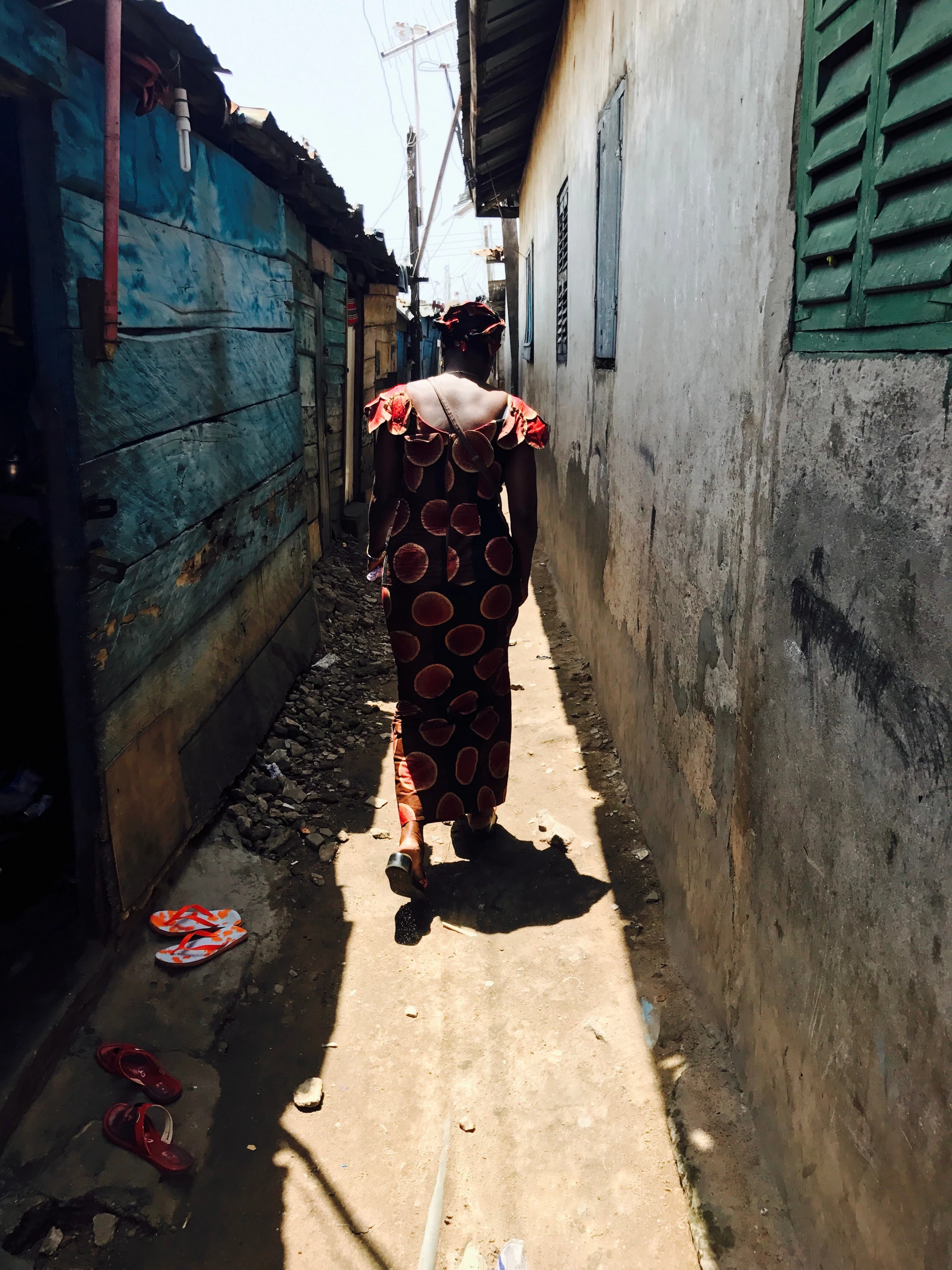In June 2015, after two days of heavy rain, flood water washed away Sarah’s small store in Accra, which provided for her family of three (1). The flood that hit the city in June 2015 affected around 53,000 people in the city and caused an estimated US$100 million in damages. Slum areas in the Odaw basin were among the worst hit.
The informal settlement of Sabon Zongo was among these areas, and this is where Sarah’s house and business were located. It took Sarah 3 months to rebuild her business. During this time, she had to repair the shop and replace the produce, although she wasn’t making any money. With no savings, Sarah was lucky to get a loan to cover these costs.
Her neighbor Mohammed, a single man in his early 40s, was also affected. Being relatively better-off, he was better prepared to respond to the shock. His business selling cool beverages out of his home came to a halt when the flood water damaged his industrial fridge. By tapping into his savings, he quickly bought a new fridge and could reopen his business after one week. Replacing Mohammed’s fridge cost much more than fixing Sarah’s small convenience store, but the impact of his loss was much smaller.
What do these stories tell us about the relationship between poverty and flood risk in Accra? They confirm the main message of our Unbreakable report, namely that the direct impact of the flood on an individual is a poor predictor of the real effect on her or his well-being and livelihood.
They also suggest that managing flood risks requires a better understanding of how floods affect poor households and the coping mechanisms they use to deal with floods. To be able to efficiently target post-disaster support and design policies to strengthen vulnerable populations, we need information about those who suffered the most.
To go beyond individual cases and anecdotal evidence, we recently performed a large household survey in several slum areas located in the Odaw basin in Accra, asking people about their experience of the 2015 floods.
Today, we publish the results of this analysis, in a paper that assesses the role of poverty in exposure to flood risk (“Who is affected by the flood?”), the vulnerability of the population and assets (“How much did the affected people lose? What type of losses did they experience”), and the socio-economic resilience of the population (“Was the affected population capable of coping with and recovering from the losses?”).
Our results are sometimes counterintuitive. For instance, we expected the flood to have affected primarily poorer households, but the data do not show a difference in poverty level (measured by the annual expenditure of households) between the affected households and those that were not affected by the flood. In the informal settlements of Accra, even relatively well-off households bore the consequences of the flood. This is probably due to the magnitude of the event, which affected even places considered relatively safe, but it is also due to tenure arrangements that make it difficult for people to move away from risks, even when they are not living in poverty.
This does not mean that the flood did not affect poor people disproportionally. Indeed, while poorer households lost less than their richer neighbors in absolute terms, they were much more affected in relative terms, when losses are compared with annual income.
Poorer households are over-represented among the most severely affected households: the poorest households (in the bottom quarter of the population in terms of annual expenditure) are 60 percent more likely than the overall population to report losses larger than 10 percent of their annual expenditure.
Two years after the flood, 31 percent of affected households report that they have not recovered yet. And as we expected, poorer households struggle more to recover. But the main reasons why recovery is more challenging for them is not their lower income per se, but everything that comes with lower income: less savings, income sources that are less stable, limited access to borrowing opportunity, less support from friends and family, and of course the fact that poor people experience larger (relative) losses.
This means that people who are not living in poverty before the flood, but who have little access to support, may be as unable to recover by themselves as poorer people, and they may also need support to avoid falling into a poverty trap. From a policy perspective, the conclusion is that post-disaster programs need to be designed to identify and target low-resilience households, even if they are not poor in monetary terms before the disaster.
These results also suggest that building resilience requires more than just growing incomes. Financial inclusion, labor regulations, and social protection systems are important building blocks of a more resilient society—a society where Sarah and her neighbors may experience a major flood without seeing their life prospects permanently altered.
1Names have been modified




Join the Conversation